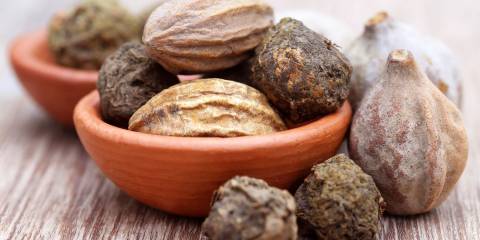The strategy of plant companionship encourages growth and prevents garden competition. This “companionship” pairs crops that will mutually benefit each other. The following are some examples of winning garden combinations and how they work.
While you plan your gardening strategy for the season, also take note of companion planting don'ts!
Crops to Plant Together
-
The Three Sisters: Corn, Beans, and Squash
American Indians coined the combination of corn, beans, and squash “The Three Sisters,” with the belief that the three crops grow best together.
Today’s gardeners have noted that beans will thrive as they grow up and around the corn. Meanwhile, the corn will gain more support and stability in the wind because of the beans.
Along with shared nutrient benefits, the roots of the squash will also prevent soil evaporation, which will provide more moisture for the crops.
-
Basil & Tomatoes
When planted with basil, the tomato’s flavor will be improved. Gardeners like Bryan Jones of the Sweet Corn Organic Nursery note that the smell of basil or other strongly scented plants will deter or confuse insects, preventing them from harming the tomatoes.
The two crops are able to share soil and space noncompetitively as they grow. It is advised to plant the basil after the tomatoes have begun to grow to prevent competition for space or soil nutrients.
-
Radishes & Carrots
While radishes deter certain insects naturally, they require similar growing conditions as carrots. Although the crops both have roots, radishes grow and germinate quicker, allowing carrots to continue growing in the soil space available when the radishes are harvested, according to Molly Allman of SFGate.com; a sister site of the San Francisco Chronicle.
-
Carrots & Lettuce
Carrots and lettuce require different nutrients from the soil. Therefore, the two crops will not compete or stunt each other’s growth.
The two are also opposites in root length as carrots have deeper roots and lettuce has a shallow root. Not only will they be able to share soil nutrients, but they will also be able to share soil space comfortably.
-
Nasturtium & Cucumber
Not only is the nasturtium an edible flower, but it is also a good growing companion of the cucumber.
Like the relationship between corn and beans, the nasturtium can also grow and thrive as its vines move along the cucumber. In turn, the nasturtium will benefit the cucumber by exerting a smell that deters insects like cucumber beetles.
Warning
While some combinations will allow your garden to flourish, others will create competition or stop the growth of your favorite crops. Learn about companion planting don'ts!




